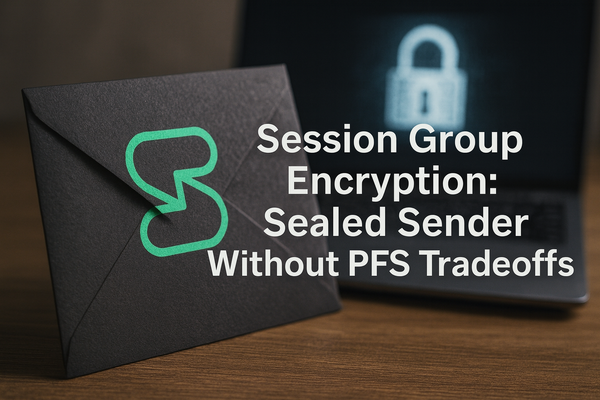[Video] KDE Linux Ends Three-Decade Distributor Dependence
KDE Linux marks the desktop environment team's first official operating system release, breaking away from three decades of dependence on third-party Linux distributors.
![[Video] KDE Linux Ends Three-Decade Distributor Dependence](/content/images/size/w1200/2025/09/kde-linux.png)
KDE Linux marks the desktop environment team's first official operating system release, breaking away from three decades of dependence on third-party Linux distributors. This immutable distribution delivers KDE's software directly to users without the modifications, delays, and political interference that have historically plagued desktop Linux experiences.
The new operating system employs an immutable architecture that maintains five cached system versions, allowing users to instantly revert problematic updates without reinstalling or lengthy troubleshooting sessions. This approach eliminates common Linux distribution issues including package conflicts, broken updates, and configuration inconsistencies between different installations. While core system components remain protected, users retain complete control over their home directories and software installation through Flatpak, Snap, AppImage, and containerized environments.
KDE Linux addresses longstanding frustrations with traditional distribution models where users receive filtered, modified versions of KDE software months after upstream releases. Distribution maintainers previously applied their own configurations, branding, and political preferences, creating inconsistent experiences that didn't reflect KDE developers' original vision. The direct delivery model ensures users experience authentic KDE implementations without compromises dictated by downstream distributor agendas.
Developers benefit significantly from the streamlined development environment, saving 45GB of storage space compared to traditional source building configurations. Compilation times decrease dramatically since only modified components require rebuilding rather than entire dependency chains. Most importantly, developers can test code in identical environments where end users will actually run their software, eliminating bugs that only appear in specific configurations.
The official distribution enables KDE to establish direct relationships with hardware manufacturers without showing favoritism toward particular Linux distributions. Future enhancements include automatic home directory encryption and intuitive backup systems using btrfs technology. While the centralized model creates potential supply chain vulnerabilities, it provides stronger protection against system-level attacks compared to traditional mutable distributions that allow extensive system modifications.
The syntax for using it in a vm:
Command 1 - Verify VirtualBox:
"C:\Program Files\Oracle\VirtualBox\VBoxManage.exe" --version
Command 2 - Navigate to directory:
cd "C:\Users\YOUR-USERNAME\Downloads"
Command 3 - Convert RAW to VDI:
"C:\Program Files\Oracle\VirtualBox\VBoxManage.exe" convertfromraw kde-linux_202509230450.raw kde-linux.vdi --format VDI
Expected: Takes 2-3 minutes, shows "Creating dynamic image..."
Command 4 - Create VM:
"C:\Program Files\Oracle\VirtualBox\VBoxManage.exe" createvm --name "KDE-Linux" --ostype "Linux_64" --register
Command 5 - Configure VM settings:
"C:\Program Files\Oracle\VirtualBox\VBoxManage.exe" modifyvm "KDE-Linux" --memory 4096 --vram 128 --cpus 2 --nic1 nat --audio-driver dsound --audiocontroller ac97
Command 6 - Add storage controller:
"C:\Program Files\Oracle\VirtualBox\VBoxManage.exe" storagectl "KDE-Linux" --name "SATA Controller" --add sata --controller IntelAhci
Command 7 - Attach VDI file:
"C:\Program Files\Oracle\VirtualBox\VBoxManage.exe" storageattach "KDE-Linux" --storagectl "SATA Controller" --port 0 --device 0 --type hdd --medium kde-linux.vdi
Command 8 - CRITICAL EFI Configuration (MANDATORY!):
"C:\Program Files\Oracle\VirtualBox\VBoxManage.exe" modifyvm "KDE-Linux" --firmware efi
Command 9 - Enable virtualization features:
"C:\Program Files\Oracle\VirtualBox\VBoxManage.exe" modifyvm "KDE-Linux" --vtxvpid on --vtxux on --hwvirtex on --nestedpaging on
Command 10 - Test VM (headless):
"C:\Program Files\Oracle\VirtualBox\VBoxManage.exe" startvm "KDE-Linux" --type headless
Expected: "VM has been successfully started"
Command 11 - Verify VM is running:
"C:\Program Files\Oracle\VirtualBox\VBoxManage.exe" showvminfo "KDE-Linux" | findstr State
Expected: Shows "running" status
Command 12 - Stop test VM:
"C:\Program Files\Oracle\VirtualBox\VBoxManage.exe" controlvm "KDE-Linux" poweroff



